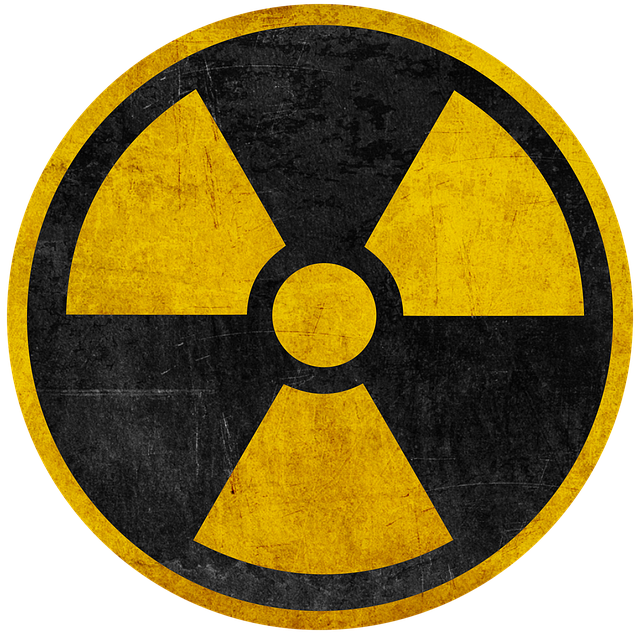Fluorodeoxyglucose (FDG), a vital contrast media for nuclear medicine, enables Positron Emission Tomography (PET) scans to visualize areas of high cellular activity like tumors by tracking glucose metabolism. FDG-PET provides functional insights into tissue metabolism, aiding in cancer detection, staging, and treatment response monitoring. Despite variable physiological processes, researchers explore advanced contrast agents, acquisition protocols, and imaging techniques to enhance diagnostic accuracy and treatment planning in oncology.
Fluorodeoxyglucose (FDG), a crucial tracer in Positron Emission Tomography (PET) scans, plays a pivotal role in cancer detection. This article delves into the mechanisms of FDG, its significance in nuclear medicine, and how it aids in identifying tumors. We explore the impact of contrast media on PET scan accuracy, highlighting its essential role in enhancing visual clarity. Furthermore, we discuss strategies to navigate limitations, focusing on improving FDG’s efficacy in oncology through innovative approaches, ultimately fostering more accurate cancer diagnosis and treatment planning.
Understanding Fluorodeoxyglucose (FDG): A Key Player in PET Scans
Fluorodeoxyglucose (FDG) is a crucial component in Positron Emission Tomography (PET) scans, serving as a specialized contrast media for nuclear medicine. It’s a radiotracer that mimics glucose, the body’s primary energy source. Once injected into the bloodstream, FDG is taken up by cells at varying rates depending on their metabolic activity. This differential uptake allows medical professionals to visualize areas of high cellular activity, like tumors, which actively metabolize glucose.
In PET scans, a camera detects positrons emitted from the decay of FDG molecules, reconstructing images that highlight these active regions. Unlike other imaging techniques, FDG-PET provides functional information about tissue metabolism, offering a detailed look at cancerous growths and their metabolic profiles. This capability makes FDG a valuable tool for detecting and staging cancers, as well as monitoring treatment responses.
Cancer Detection: The Role of FDG in Nuclear Medicine
Cancer detection is one of the key applications of Fluorodeoxyglucose (FDG) in nuclear medicine. FDG, a radiolabelled form of glucose, serves as a crucial contrast media for nuclear medicine scans, allowing healthcare professionals to visualise and diagnose cancerous cells with remarkable precision. When introduced into the body, FDG is taken up by active metabolic tissues, including tumours, where it undergoes phosphorylation, leading to its accumulation. This process enables the detection of cancerous growths that may not be readily visible through other imaging techniques.
The role of FDG in PET (Positron Emission Tomography) scans is particularly noteworthy. PET scanners detect pairs of positrons and gamma rays emitted during the decay of FDG, reconstructing detailed images that highlight areas of increased metabolic activity. This capability makes FDG-PET highly effective in identifying both primary tumours and metastases, providing valuable information for treatment planning and monitoring responses to therapy. The specific uptake patterns of FDG by cancer cells offer a non-invasive method for early detection, making it an invaluable tool in the fight against cancer.
Contrast Media and Its Impact on PET Scan Accuracy
Contrast media, often referred to as radiotracer agents, play a pivotal role in enhancing the accuracy and diagnostic power of Positron Emission Tomography (PET) scans, particularly for cancer detection. These specialized substances are designed to interact with specific metabolic pathways in the body, allowing for improved visualization of physiological processes. In the context of nuclear medicine, contrast media like Fluorodeoxyglucose (FDG) have become indispensable tools.
When introduced into the patient’s bloodstream, FDG mirrors glucose metabolism, accumulating in areas of high cellular activity, including tumors. This targeted accumulation enhances the contrast between normal and cancerous tissues during a PET scan, leading to more precise identification and localization of suspicious regions. The impact of contrast media is significant, as it enables radiologists to differentiate benign from malignant lesions, ultimately improving diagnostic accuracy and guiding treatment strategies.
Navigating Limitations: Enhancing FDG's Efficacy in Oncology
Navigating Limitations: Enhancing FDG’s Efficacy in Oncology
Fluorodeoxyglucose (FDG) PET scans have proven to be a valuable tool in cancer detection, offering metabolic insights beyond traditional anatomical imaging. However, challenges remain in optimizing its efficacy. One significant hurdle is the potential for false positives or negatives due to varying physiological processes across different types of cancers and even within individual tumors. This variability underscores the need for more precise contrast media for nuclear medicine, which can better highlight cellular activity patterns unique to cancerous tissue.
By exploring innovative contrast agents and refining acquisition protocols, researchers aim to minimize these limitations. Advanced imaging techniques that combine FDG with other tracers or molecular probes hold promise in enhancing diagnostic accuracy. Additionally, individualized patient-specific models that account for tumor heterogeneity can improve interpretation of FDG uptake, leading to more effective cancer detection and treatment planning.
Fluorodeoxyglucose (FDG) plays a pivotal role in cancer detection via PET scans, offering valuable insights into tumor metabolism. However, navigating limitations requires careful consideration of contrast media usage in nuclear medicine. By optimizing FDG’s efficacy and addressing inherent challenges, healthcare professionals can enhance diagnostic accuracy in oncological practices, ultimately improving patient outcomes. Incorporating advancements in contrast media for nuclear medicine promises to revolutionize cancer detection, making PET scans even more powerful tools in the fight against this complex disease.
